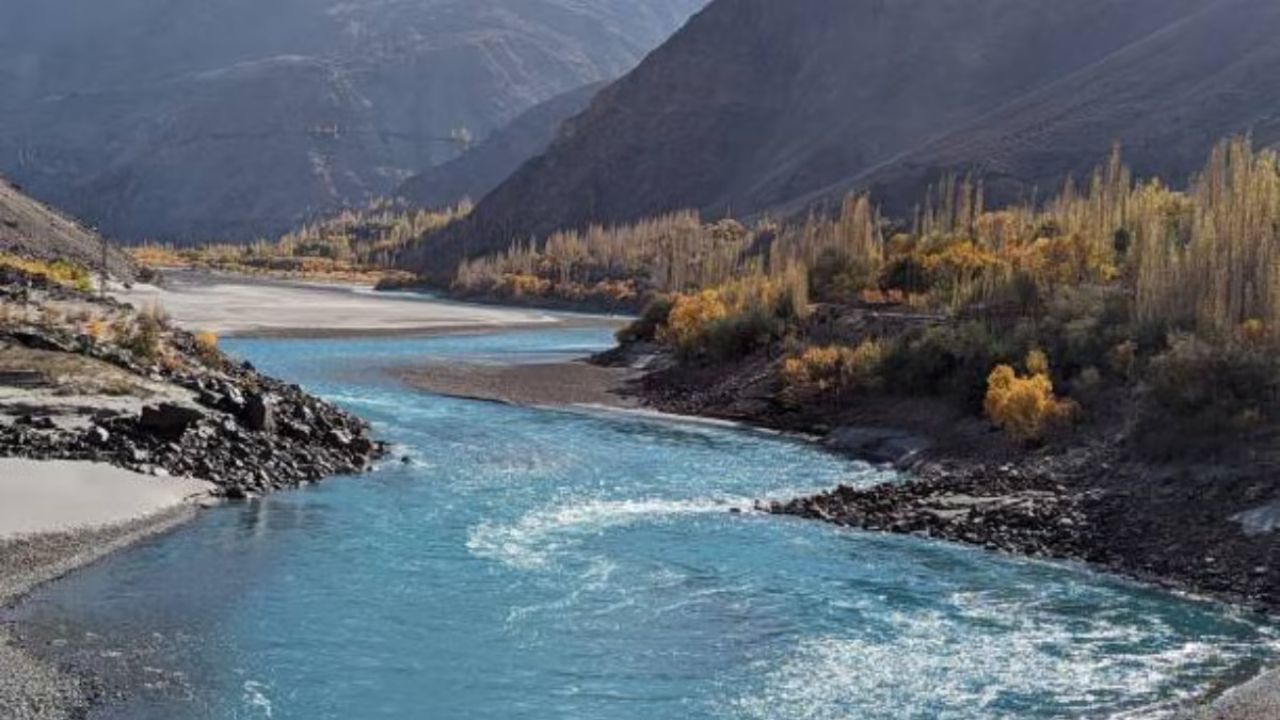The Indus River is one of the longest and most historically significant rivers in the world. Flowing through three countries—China (Tibet), India, and Pakistan—it serves as a lifeline for millions of people and is the cradle of one of the oldest civilizations on Earth: the Indus Valley Civilization. This river’s journey from its source in the Himalayas to its mouth at the Arabian Sea is not just a geographical passage—it’s a cultural, economic, and historical voyage that has shaped the region for thousands of years.
Origin of the Indus River: Where It All Begins
The Indus River originates in the remote and rugged region of western Tibet, near Lake Manasarovar, close to Mount Kailash—a sacred mountain in Hinduism, Buddhism, Jainism, and Bon religions. The river rises at a height of around 18,000 feet (5,500 meters) in the Tibetan Plateau, in the vicinity of the Bokhar Chu glacier.
From its Tibetan source, the river begins a northwestward journey. It quickly gains volume as it collects waters from glacial melt and numerous streams in the Himalayas. This early stretch of the Indus is relatively inaccessible and flows through steep gorges and narrow valleys, especially as it crosses into the Indian-administered region of Ladakh in Jammu and Kashmir (now part of the Union Territory of Ladakh).
Key Facts about the Source:
-
Source Location: Bokhar Chu glacier, near Lake Manasarovar, Tibet
-
Elevation at Source: ~18,000 feet (5,500 meters)
-
Name in Tibet: Called “Singhi Khamban” or “Lion’s Mouth”
The Path Through India
As the Indus flows through Ladakh, it traverses a stark, high-altitude desert landscape. The river is central to the lives of the people in this arid region, offering a precious source of water for agriculture and daily life. The Indus then continues into Pakistan through the region of Gilgit-Baltistan, after briefly touching the Indian-administered territory.
The Indian stretch of the Indus River is relatively short—roughly 1,100 kilometers (680 miles) of the river’s 3,180-kilometer (1,976-mile) total length lies within Indian or disputed territory. However, it plays a vital role in the political and environmental dynamics of the region, particularly in the context of the Indus Waters Treaty signed in 1960 between India and Pakistan.
The Main Journey Through Pakistan
The majority of the Indus River’s course lies in Pakistan, where it plays an absolutely critical role in supporting agriculture, economy, and daily life.
Entry into Pakistan:
The Indus enters Pakistan near Skardu in the Gilgit-Baltistan region. From here, it starts descending from mountainous terrain into the plains, gaining strength from its five major tributaries:
-
Jhelum River
-
Chenab River
-
Ravi River
-
Beas River (enters mainly into India but historically a tributary)
-
Sutlej River
The confluence of these rivers with the Indus has historically given the region its name: Punjab, meaning “Land of Five Rivers.”
Flow Through the Plains:
After leaving the rugged mountain terrain, the Indus flows through major cities and fertile plains of Punjab and Sindh. Cities like Sukkur, Hyderabad, and Thatta have developed along its banks. These regions depend heavily on the Indus for irrigation, facilitated through an elaborate canal system that makes up one of the largest irrigation networks in the world.
Irrigation and Agriculture:
The river is crucial to Pakistan’s agriculture. The Indus Basin Irrigation System sustains millions of acres of farmland, especially in the provinces of Punjab and Sindh. Key crops like wheat, cotton, rice, and sugarcane rely on this water source.
However, overuse, pollution, and climate change have put considerable stress on the river’s flow and quality, leading to ecological and political challenges.
The End Point: Arabian Sea
After flowing through the Sindh province in southern Pakistan, the Indus finally empties into the Arabian Sea near Karachi, Pakistan’s largest city. This area is home to the Indus River Delta, an ecologically rich but environmentally threatened region.
The Indus Delta:
The delta is formed as the river splits into numerous distributaries before merging into the sea. Historically, this delta covered an expansive area and supported diverse species of flora and fauna, as well as fishing communities. However, due to upstream damming, reduced water flow, and sea-level rise, the delta is shrinking. The intrusion of saltwater has affected freshwater availability and agriculture in the region.
Key Facts about the End:
-
Mouth Location: Arabian Sea, near Thatta and Karachi, Pakistan
-
Indus Delta Area: Once over 13,000 sq. km, now significantly reduced
-
Challenges: Salinity intrusion, declining biodiversity, coastal erosion
Cultural and Historical Significance
The Indus River is not only a geographical feature but also a symbol of ancient civilization and human development. The Indus Valley Civilization, which flourished around 2600–1900 BCE, developed along its banks. Cities like Mohenjo-daro and Harappa thrived due to the fertile plains and trade enabled by the river.
Over centuries, the river has witnessed the rise and fall of empires, from the Mauryas and Kushans to the Islamic Caliphates and British colonialists. Even today, it plays a key role in shaping the national identity of Pakistan. In fact, the name “India” itself is derived from the word “Indus.”
Environmental Challenges
In recent decades, the Indus River has faced numerous environmental challenges:
-
Glacial Retreat: The Himalayas are melting due to climate change, affecting the source and flow of the river.
-
Water Scarcity: Increasing water demands from agriculture, industry, and population have strained the river’s resources.
-
Pollution: Industrial waste, sewage, and pesticide runoff have degraded water quality.
-
International Tensions: Water sharing between India and Pakistan remains a sensitive issue despite the Indus Waters Treaty.
Conclusion
From its serene source in the Tibetan Plateau to its dramatic end in the Arabian Sea, the Indus River tells a story that spans geography, history, culture, and geopolitics. It has nurtured civilizations, inspired poetry, sustained economies, and now stands at the crossroads of environmental sustainability.
In today’s context, preserving the Indus is not just about conserving a river—it’s about protecting the heritage and future of an entire region. As climate change and water scarcity loom large, understanding the journey of the Indus River reminds us of the delicate balance between nature and civilization.
Read more: Rare Lincoln Wheat Penny Worth $156,000 Found in Pocket Change

